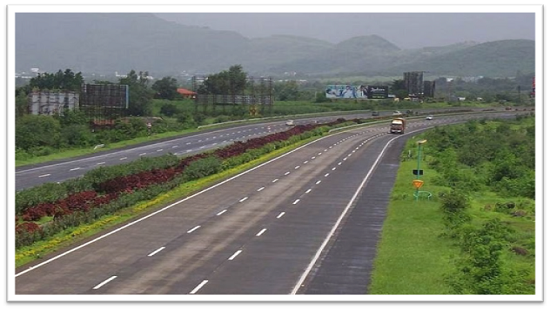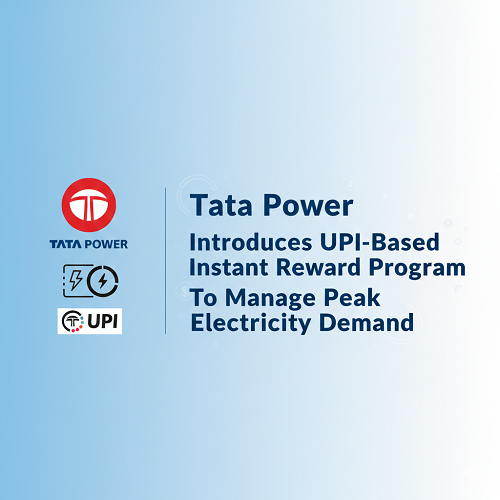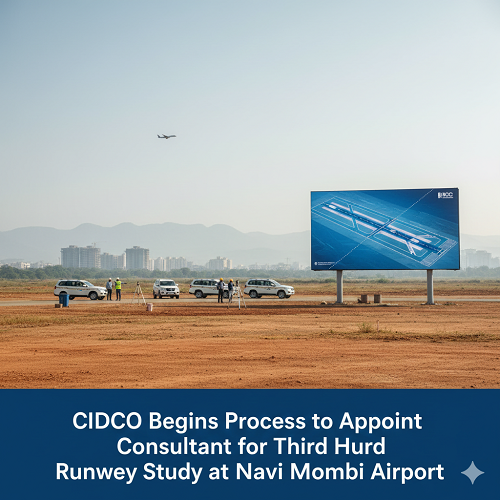
Maharashtra’s Mega Road Upgrade, Mumbai–Pune Expressway to Become a 10-Lane Superhighway by 2030!
Maharashtra is gearing up for one of its most ambitious infrastructure upgrades yet — the transformation of the Mumbai–Pune Expressway into a 10-lane superhighway by 2030. The Maharashtra State Road Development Corporation (MSRDC) has unveiled plans for a massive expansion of the state’s most vital transport corridor, aimed at easing traffic congestion and improving connectivity between the financial capital, Mumbai, and the cultural hub, Pune. Operational since 2002, the expressway has long been a symbol of modern Indian infrastructure. Now, with vehicular traffic far exceeding its original design capacity, authorities are preparing to give it a future-ready makeover to accommodate rapid economic and population growth across the region.
The expansion, pegged at an additional cost of ₹1,420 crore, will increase the total project expenditure to approximately ₹14,260 crore, making it one of the largest expressway upgradation projects in India. Under the proposed Hybrid Annuity Model (HAM), 40% of the funding will come from the government, while private partners will contribute the remaining 60%. The plan, expected to be submitted after Diwali, aligns with the state’s broader vision to create high-speed, multi-lane expressways that promote trade, tourism, and investment. By 2030, the Mumbai–Pune Expressway will not just be a route connecting two cities — it will stand as a model of engineering innovation and sustainable mobility in India.
Mumbai–Pune Expressway Expansion, A Landmark Project for Maharashtra
The 94.6-kilometre Mumbai–Pune Expressway currently connects Kalamboli in Navi Mumbai to Kiwale near Pune and has been a lifeline for over two decades. Carrying around 65,000 vehicles daily — and over one lakh during weekends — the expressway plays a crucial role in supporting the region’s economy. With the exponential rise in both passenger and freight movement, congestion has become a recurring challenge, particularly near the Lonavala–Khandala stretch. The expansion to ten lanes is designed to decongest these high-traffic zones and improve travel time, safety, and overall driving experience.
According to reports, the proposal will soon be presented to the state government for final approval. The project’s tendering and detailed design process are expected to follow in phases, with the appointment of an implementing agency by March 2026. Construction is likely to begin shortly afterward, targeting completion by 2029–30.
Hybrid Annuity Model (HAM) Funding
The Mumbai–Pune Expressway expansion will be executed under the Hybrid Annuity Model, a popular financing structure in India’s road sector. Under HAM, 40% of the project cost is borne by the government during the construction period, while the remaining 60% is financed by private players, who later recover their investment through semi-annual payments and toll revenues. This model ensures that the private partner remains invested in long-term quality maintenance, while reducing the upfront financial burden on the state exchequer.
Officials from the MSRDC have stated that the new expansion plan reflects the corporation’s strategy of balancing public investment with private expertise. The PPP-based approach will also help ensure faster project delivery and sustained operational efficiency once the expressway becomes a 10-lane superhighway.
Alignment with the Khandala Ghat Missing Link
The proposed expansion will be synchronised with the ongoing “missing link” project — a 13-kilometre stretch between Khopoli and Khandala designed to bypass steep ghat sections notorious for bottlenecks and accidents. Once completed, the missing link will reduce the travel time between Mumbai and Pune by nearly 20 minutes, while enhancing road safety through modern tunnel and viaduct systems.
Integrating the missing link with the expressway expansion will create a seamless high-speed corridor, drastically reducing congestion during peak hours, weekends, and festive seasons when traffic volumes can double. The combined upgrades aim to make intercity travel faster, safer, and more predictable.
Economic Significance and Regional Impact
The Mumbai–Pune Expressway is not only a vital road link but also a key economic artery that fuels Maharashtra’s industrial and logistics ecosystem. Stretching through Navi Mumbai, Panvel, Lonavala, and Pimpri-Chinchwad, it connects major industrial zones, IT hubs, and tourism destinations. The proposed expansion will therefore enhance trade logistics, tourism flow, and regional accessibility — supporting the growth of satellite towns and boosting real estate development along the corridor.
Officials have noted that the expressway’s toll collection rights, currently valid until 2045, may be extended to ensure financial sustainability for the expansion project. The MSRDC expects that better capacity, smoother traffic flow, and reduced travel time will lead to higher toll revenue and improved user satisfaction.
Engineering and Safety Upgrades
The new 10-lane expressway will be equipped with upgraded safety systems, intelligent traffic management, and improved lane discipline mechanisms. Plans include the installation of CCTV surveillance, automated speed enforcement, reflective road markings, and emergency response units at strategic intervals. The project will also focus on minimizing the environmental impact by incorporating noise barriers, tree plantations, and efficient drainage systems along the expanded stretches.
Moreover, the addition of new lanes is expected to reduce accident rates that often occur due to heavy vehicle congestion and lane merging issues. Enhanced lighting and emergency bays will further improve road safety and travel comfort, especially during night hours.
Timeline and Future Outlook
According to the proposed schedule, the implementing agency will be finalised by March 2026, and construction is expected to commence soon after. If progress remains on track, motorists could experience the fully expanded 10-lane expressway by 2030. This timeline coincides with several other major infrastructure developments across Maharashtra, including the Mumbai Trans Harbour Link (MTHL) and the Pune Ring Road, both of which aim to strengthen regional connectivity.
Towards a Faster, Safer, and Smarter Maharashtra
The Mumbai–Pune Expressway expansion represents more than just a widening project — it’s part of Maharashtra’s broader vision to build world-class, future-ready highways that connect cities, drive investment, and improve quality of life. Once completed, the 10-lane expressway will not only enhance the efficiency of intercity travel but also reaffirm the state’s position as India’s infrastructure leader.
By 2030, what began as India’s first six-lane expressway in 2002 will evolve into a modern, technology-driven superhighway — symbolising Maharashtra’s progress, innovation, and commitment to sustainable mobility.





